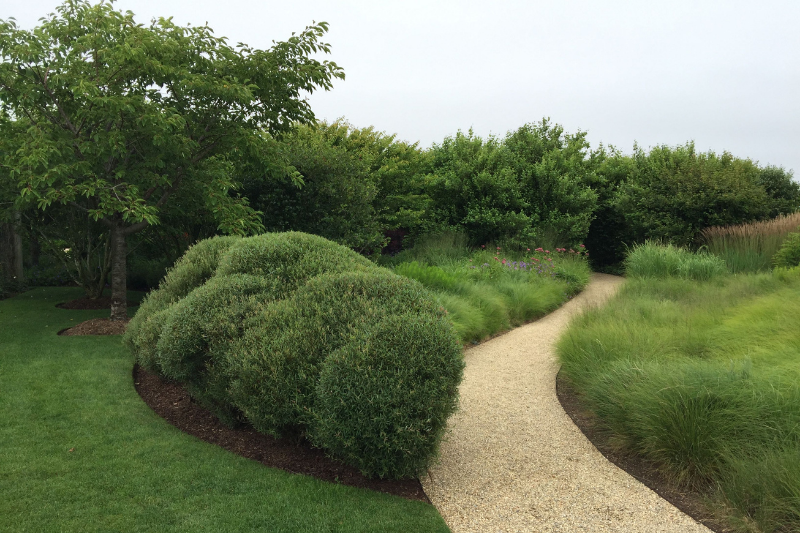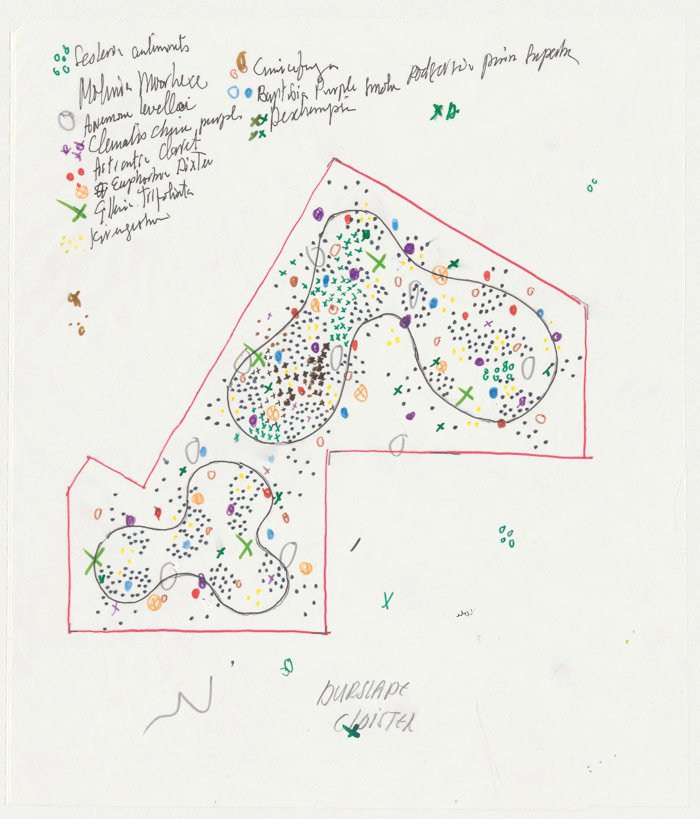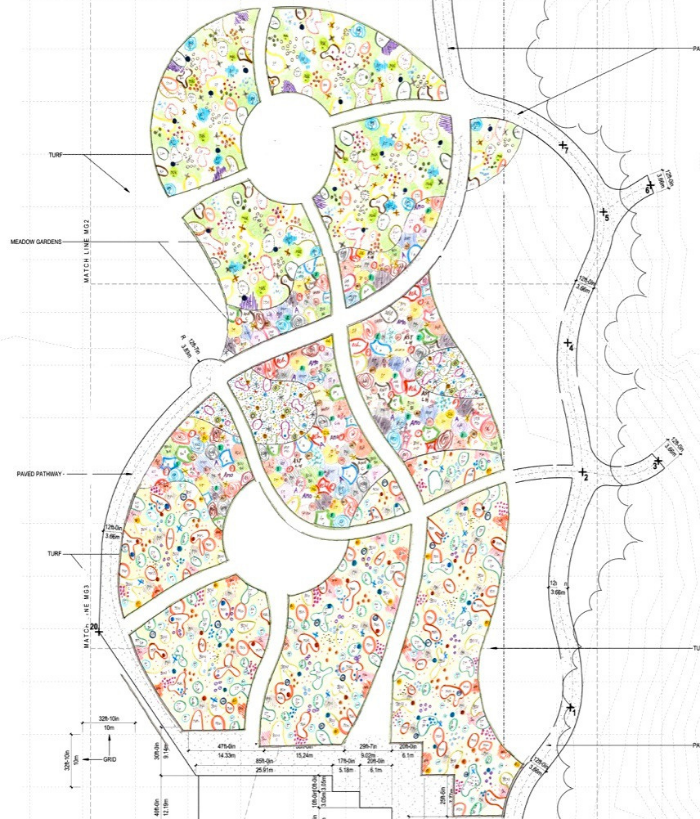Gardens as Art - The Designs of Piet Oudolf
Photo by Bart Heynen via thinkingardens.co.uk
Piet Oudolf is an award winning landscape architect and one of the most highly sought after designers of public and private gardens today. In the 1980s and 90s his naturalistic landscapes revolutionized the gardening world, and his trademark designs now bloom from Germany to Detroit inside of private gardens, museums, galleries, and public parks. In our continuing series on modern artists and designers, we look at Piet Oudolf’s visionary gardens, and their marriage of architecture, ecology, and design.
Photo by Jason Ingram via House & Garden
Photo from thenewperennialist.com
Photo by Piet Oudolf via Hauser & Wirth
Photo by Piet Oudolf via Hauser & Wirth
Photo from Wallpaper Magazine
Born in the Netherlands in 1944, Oudolf discovered gardening at the age of 25. Drawn at first to classical English styles, he developed his own avant garde aesthetic after observing wild plants in nature, and wondering why these interesting and beautiful varieties couldn’t also be used in garden design as well. In a departure from traditional, manicured, and ordered designs centered on flowers, Oudolf creates naturalistic landscapes that mix grasses and interesting perennials in meadow-like displays that feel spontaneous and wild. Set amongst smooth, winding pathways and modern shapes, they’re a blend of nature and design.
Photo by Chris Denning via vergegardendesign.com
Photo by Brüse via oudolf.com
Photo by Jason Ingram via Hauser & Wirth
Photo from oudolf.com
Photo from oudolf.com
When he first started out as a landscape architect the plants he sought were difficult to find. So, he and his wife Anja grew them themselves at the plant nursery they started at their home in Hummelo.
Photo by Andrew Montgomery via houseandgarden.co.uk
Photo from gardendesign.com
Photo from flowermag.com
Photo from gardendesign.com
Photo from thenewperennialist.com
Photo from noelkingsbury.com
Photo from flowermag.com
Photo from thenewperennialist.com
This opportunity to observe plants from seed as they grew revealed those that were best suited to his designs. Some bunched together like bushes, growing curved, arched, and gnarled, and others stood up straight, tall, and wiry. Some competed and overseeded, taking over a garden, and others lived harmoniously with their neighbors. Leaves, stems, seed heads, and flowers transformed throughout the seasons, and different plants lived for different lengths of time. Noting these details, he discovered his palette: beautiful and colorful plants that would remain interesting and well behaved for years.
Photo by Brüse from oudolf.com
Photo by Hans Van Horssen via designboom.com
Photo from oudolf.com
Photo by Jo Fawcett & Jo Whitworth
Oudolf designs each garden by hand, mapping out in circles and abstract shapes a layout that’s in itself, a piece of modern art.
Photo from Piet Oudolf via Hauser & Wirth and designcurial.com
Photo from wallpaper.com
Photo via the Delaware Botanic Gardens
Photo via thenewperennialist.com
Each site’s environment, topography, the way it will be used, and plans for the future inform the layers of the design. Young trees will eventually grow taller, and shapes and colors will change each day, as buds, shoots, leaves, and flowers appear or become transformed. However, this organic, undulating evolution is incorporated into his designs. His gardens are living works in progress. “I make something that is so fluid, so changeable. My work is never finished, but is always just the beginning of something. It’s not making a painting and putting it on the wall. It’s making a painting and letting it grow and decay.” - vitra.com interview.
Photo by Hans Van Horssen
Photo by Piet Oudolf via Hauser & Wirth
Photo from detroitisit.com
Photo by Piet Oudolf via The American Society of Landscape Architects
Photo from oudolf.com
Photo from jasoningram.co.uk
Oudolf’s designs celebrate not only the sumptuous beauty of flowers, but plants’ bones, as they stand dead and dying in winter and fall. Just like in nature, in this state they still add unique textures, shapes, and colors to a visual landscape, and their sculpture-like remains benefit the ecosystem. Seeds and shelter attract birds, bees, butterflies, insects, and animals, and decomposing plant matter nourishes the soil. Oudolf’s embrace of this entire cycle adds a depth to his garden designs. They are not merely ornamental displays, but immersive microcosms of life.
Photo from jasoningram.co.uk
Photo by Heather Edwards via gardenista.com
Photo from jasoningram.co.uk
Photo by Jo Fawcett & Jo Whitworth
Photo from jasoningram.co.uk
Photo from jasoningram.co.uk
His gardens are spaces to get lost in. They often feature curving, meandering paths with no apparent beginning or end, and grassy mounds, chairs, benches, and sculptures.
Photo by Marek Iwicki via Dwell Magazine
Photo from oudolf.com
Photo from The Society of Garden Designers
Photo from vitra.com
Photo by Julien Lanoo via Dwell Magazine
Photo from vitra.com
In cities, they provide a place where people can connect with nature, and their naturalistic designs fit in with even the most urban architectural skylines and downtown environments.
Photo by Robin Carlson: via The Chicago Tribune
Photo from The Cultural Landscape Foundation tclf.org
Photo from The Cultural Landscape Foundation tclf.org
Photo from The Vancouver Sun
Oudolf’s work can be found at museums, galleries, private homes, institutions, and public spaces around the world, including custom designs for New York’s High Line and Battery Park, the Lurie Garden in Chicago’s Millennium Park, Detroit’s Bell Island, Germany’s Maximilian Park and Vitra Campus, Hauser & Wirth Somerset and Isla del Rey, London’s Serpentine Gallery, Noma in Copenhagen, the Venice Biennale, and for the No. 5 Culture Chanel exhibit in Paris.
Photo by Anna Huix courtesy of Hauser & Wirth via The Financial Times
Photo by Daniel Schaefer via The Robb Report
Photo from jasoningram.co.uk
Photo by Julien Lanoo via wallpaper.com
Photo from maximilianpark.de
Photo from scampston.co.uk
Photo by Small Moon Slash Flickr via artforum.com
Photo by Annik La Farge & Rick Darke on oudolf.com
Photo from oudolf.com
Images courtesy of Piet Oudolf, Hauser & Wirth, Delaware Botanic Gardens, Maximilian Park, Vitra, Scampston, Dwell Magazine, Wallpaper Magazine, Design Boom, Flower Magazine, House & Garden, The Chicago Tribune, The Financial Times, The Robb Report, The New Perennialist, The Vancouver Sun, artforum.com, gardendesign.com, designcurial.com, gardenista.com, The American Society of Landscape Architects, Society of Garden Designers, The Cultural Landscape Foundation, Detroitisit, Verve Garden Design, Jason Ingram, Chris Denning, Brüse, Andrew Montgomery, Phillipe Perdereau, Noel Kingsbury, Jo Fawcett, Jo Whitworth, Hans van Horssen, Heather Edwards, Marek Iwicki, Julien Lanoo, Robin Carlson, Anna Huix, Successio Miro, VEGAP, Daniel Schaefer, Annik la Farge, and Rick Darke.


























































